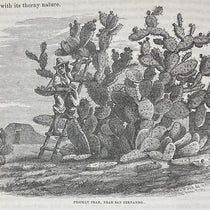Scientist of the Day - Nicolaus Steno
Nicolaus Steno, a Danish physician and anatomist, died Nov. 25, 1686, at the age of 48. Although trained in medicine in Copenhagen, Steno (or Niels Stensen, as the Danes call him) migrated down to Italy in 1666 and ended up in the entourage of Leopoldo de’ Medici of Florence. Diverted by the study of a great white shark, which suggested to Steno that the figured stones called "tonguestones" were actually the fossilized remains of ancient shark's teeth, Steno began to study the geology of Florence and the surrounding Tuscan landscape, with its tilting and displaced strata. Steno came to realize that rocks are laid down over time, so that the lower strata are older, and that all strata when laid down were horizontal and continuous, which means that inclined strata and cliffs were the result of some action over time. Steno was thus the first to realize that the earth contains a record of its own history--that geological strata are like pages of a book that can be easily read, once you know the language of stratigraphy. He published a book on the subject in 1669, with an awkward title that translates to Prodromus to a Dissertation concerning Solids Naturally Contained within Solids. In one fell swoop, he founded the sciences of paleontology, stratigraphy, and historical geology. Having radically reformulated the sciences of the earth in just three years, Steno then moved on to what he considered higher matters, saving souls, as he became, in turn, a priest, a bishop and an archbishop in the Catholic Church. He is currently well on the road to canonization as a Saint.
The portrait of Steno is in the Museo Galileo in Florence. The second and third images are from his 1667 treatise, showing shark’s teeth and tonguestones, and visually arguing for their common origin. The fourth image is a chart, from the Prodromus of 1669, showing six stages in the geological evolution of Florence. It is the first chart of stratigraphic succession ever published. The fifth image shows the title page of the Prodromus. Both books are in our History of Science Collection. The last image is a splendid Google Doodle, honoring Steno’s birthday and his work in stratigraphy, which appeared Jan. 11, 2012.
Dr. William B. Ashworth, Jr., Consultant for the History of Science, Linda Hall Library and Associate Professor, Department of History, University of Missouri-Kansas City. Comments or corrections are welcome; please direct to ashworthw@umkc.edu.












